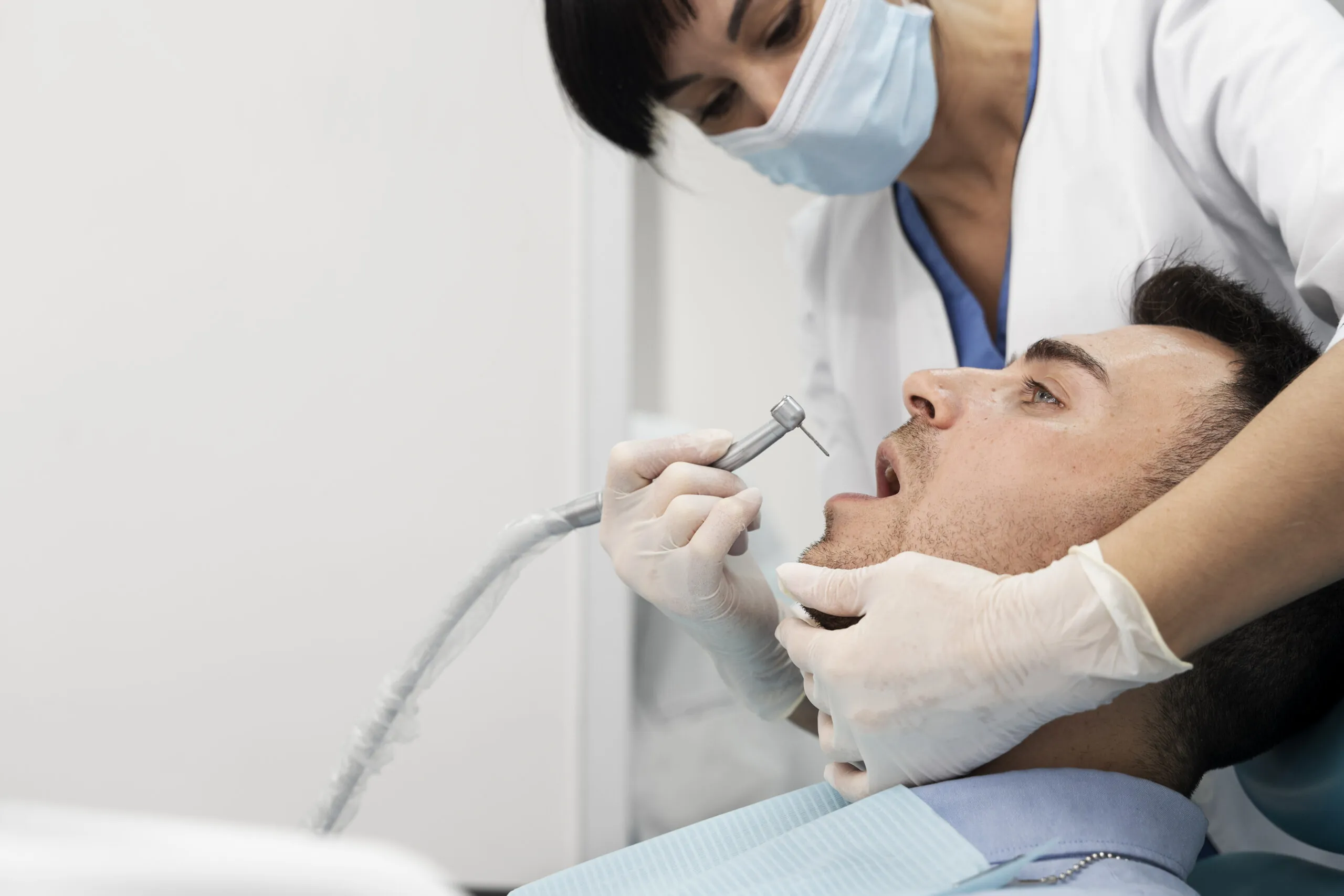Periodontics
Guarding Gums, Preserving Smiles

Everything About
Periodontics
What Is Periodontics?
Periodontics is a specialized field within dentistry dedicated to maintaining the well-being of your gums and jawbone, which serve as vital support structures for your teeth. A periodontist is a dental professional who specializes in gum care. Following their completion of a four-year dental school program, periodontists undergo an additional three years of concentrated education in periodontics to ensure expert knowledge and skills in this area.
At Smile Time Dental, we’re committed to providing exceptional periodontal care for patients of all ages. Our team of experienced and dedicated periodontists understands the crucial role that gum health plays in maintaining a beautiful and long-lasting smile. We’ve made it our mission to ensure our patients receive the highest quality of care, tailored to their unique needs.
What’s The Difference Between A Periodontist And A Dentist?
Periodontists are dental specialists who have undergone three extra years of training and education in gum disease management. Their expertise extends to cosmetic dentistry and oral surgery, depending on their individual training. Periodontist closely examines the gums and supporting bone structures of your teeth to maintain their optimal health. While dentists concentrate on comprehensive oral care, our periodontist offers specialized knowledge in diagnosing and treating oral inflammation, gum disease, and other dental concerns related to the gums and bones surrounding your teeth.
What Sort Of Procedures Are Performed By A Periodontist?
Periodontists provide an extensive range of treatments, such as periodontal maintenance, scaling and root planing, and various periodontal surgeries.
Periodontal Maintenance
This type of teeth cleaning is akin to a routine dental cleaning. In addition to teeth cleaning, a periodontist or hygienist also evaluates gum health and measures pockets surrounding the teeth. Individuals requiring periodontal maintenance usually undergo these cleanings every three to four months, with the periodontist recommending a suitable schedule.
Scaling and Root Planing (Deep Cleaning)
Also known as a deep dental cleaning, scaling and root planing involves numbing the gums with local anesthesia to enable deep cleaning beneath the gum line, where harmful bacteria reside. Tooth root surfaces are also smoothed to prevent plaque and bacterial buildup. This treatment is recommended for those with mild gum disease.
Periodontal Surgery
Periodontists perform various gum surgeries, such as gingival flap surgery for moderate to severe periodontitis, gum grafts for gum recession, tooth extractions for difficult-to-remove teeth, dental bone grafts for bone regeneration, surgical crown lengthening to accommodate dental crowns, smile lifts to remove excess gum tissue, and frenectomies to address issues like tongue-tie or gum recession. These specialized treatments help address and manage gum-related concerns and maintain oral health.
Although not exclusive to periodontics, many periodontists also place dental implants, as do oral surgeons and some general dentists.
To ensure patient comfort during procedures, most periodontists offer sedation dentistry options, such as nitrous oxide, oral sedation, or IV sedation.

5 Signs That You Need A Periodontist's Help
- Bite Changes
- Gums That Bleed Easily
- Loose Teeth
- Receding Gums
- Pain Coming From Gums

5 Signs That You Need A Periodontist
- Bite Changes
- Gums That Bleed Easily
- Loose Teeth
- Receding Gums
- Pain Coming From Gums
How can we help you?
Frequently Asked Questions
A periodontist is a dental professional who specializes in treating gum diseases, dental implant placement, gum and bone grafting, and other procedures related to the gums and supporting structures of the teeth.

